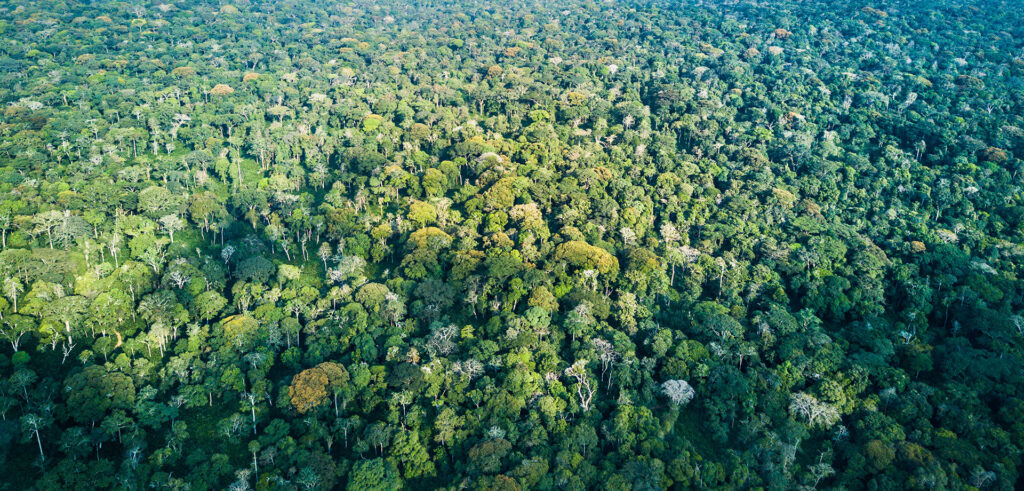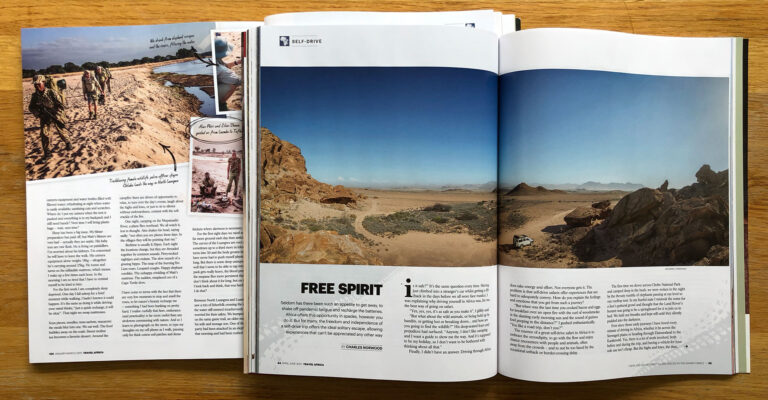Us and the environment

We care very deeply about the environment. It is not lost on us that we publish a print magazine about travel, at a time when the planet desperately needs to expand our forest reserves and dramatically reduce our carbon footprint. Like so many businesses, we are constantly reflecting on how we can operate in a more environmentally-friendly way, and will consistently evolve and explore ways in which we can improve.
On travel
We acknowledge that travel in general needs to change – and will do, both in response to Covid and pressure on the environment. Technological advancements in the airline industry will help, carbon offsetting programmes are more commonly used, and fewer flights need to be taken – particularly on short-haul routes.
However, we also recognise that tourism is absolutely critical to the protection of the environment across the whole of Africa. Indeed, in so many areas, tourism is the only thing preventing swathes of land being overrun by a rapidly growing human population. We dedicated the whole of issue 90 to this issue, and I urge you to read it to see quite how important your trip to Africa is.
We followed this up – in issue 91 – by talking about the wider impact of your safari on communities and conservation efforts across Africa. Tourism provides the economic motivation to protect our natural resources.
So, we are passionate advocates for travel to Africa. Notwithstanding the long-haul flights, travel in Africa is already pretty low-impact, but it is possible to reduce your carbon footprint further, by taking fewer internal flights, staying longer in fewer places and ensuring you choose to stay at the ever-increasing number of environmentally-friendly or carbon-neutral camps and lodges that support community and conservation programmes.
On the magazine
Reading a print magazine is a special experience, and we, like so many of our readers, cherish the opportunity to get away from a screen and discover new things with each turn of the page. Of course we want to reduce the amount of paper we use and make this as environmentally-sensitive as possible.
In recent years we have reduced excess print quantities, cutting back on the number of copies sent to retailers around the world. Unsold copies are often recycled, but the reality is it would be better if they weren’t printed in the first place. So, the magazine is now available only through a select, smaller number of retailers in fewer countries, and is primarily bought directly from this website.
Travel Africa is also widely available in digital formats for those people who would prefer not to receive a print copy. We have a dedicated App on all App stores, it is available on Zinio.com and other digital newsstands, and as a digital flipbook directly from us.
Our printers
We have a longstanding relationship with our printers, Warners Midlands. Warners is ISO14001 certified and has, in our eyes, an impressive commitment to the environment. You can see their full environmental statement here, but highlights include:
- 100% of their electricity is generated from renewable sources;
- all paper is sourced from FSC managed sources;
- the aluminium printing plates are 100% recyclable;
- solvent-laden IPA has been eliminated from the print process;
- they have a recycling rate of over 99%;
- they have more than halved their carbon footprint since 2014.
Our packaging
We have a few challenges with regards the packaging used when posting our subscriber copies: we need a material that is strong enough to protect the magazine as it travels through postal systems around the world, which is not too heavy or too expensive, and which is kind to the environment.
Today our magazines are shipped in a sugar cane polythene called Polyair, which is a single-layered film extruded using 75% bio-based polymer content. It is certified PAS2050 – carbon neutral – by the Carbon Trust. (It consumes more CO2 than it produces during production.)
Polyair is made from sustainable raw material derived from sugar cane. When sugar cane is processed to make sugar, the cane is pressed five times to extract the sugar juice. The final three presses are used to produce ethanol, which is converted to ethylene.
The packaging is widely recycled and biodegradable.
More from us
Subscribe
Never miss an issue of Travel Africa
To ensure you get your regular Africa fix, subscribe to have each issue of Travel Africa delivered directly to you as soon as it is published (four times a year). Choose from print+digital or digital-only options, to suit your preferred reading style. Renewals and gift options are also available.
Join our Shamwari gnusletter
Sign up to receive additional content, news and travel tips by email. Your address will be used only for this purpose and you can unsubscribe at any time.
By using this form you agree that you have read our Privacy Policy






